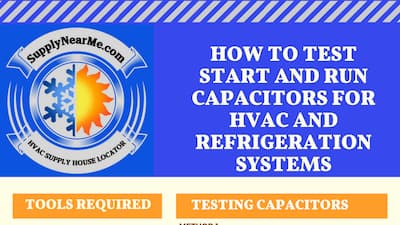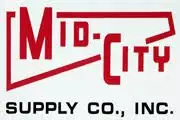How to Calculate Superheat and Subcooling for HVAC and Refrigeration Systems
What is Superheat

Ensuring proper superheat in HVAC and refrigeration systems is very important. Correct superheat ensures that the compressor is not being flooded. Flooding occurs when liquid refrigerant makes its way back to the compressor. This can cause lubrication issues and could damage the compressor.
How to Test Start and Run Capacitors for HVAC and Refrigeration Systems
What is a capacitor
 A capacitor is an electrical device which stores an electrical charge. They are typically used in HVAC systems on fan motors and compressors. In an HVAC system there are typically 2 types of capacitors which are used. Start capacitors are used to provide extra torque to compressors during start-up. After the compressor is started, a potential relay disconnects the capacitor from the compressor. Run capacitors are used to provide a relatively constant voltage supply to fan motors and compressors. Run capacitors also increase torque during start-up.
A capacitor is an electrical device which stores an electrical charge. They are typically used in HVAC systems on fan motors and compressors. In an HVAC system there are typically 2 types of capacitors which are used. Start capacitors are used to provide extra torque to compressors during start-up. After the compressor is started, a potential relay disconnects the capacitor from the compressor. Run capacitors are used to provide a relatively constant voltage supply to fan motors and compressors. Run capacitors also increase torque during start-up.
Capacitors have 2 electrical ratings of importance, voltage and capacitance. Capacitors typically found in HVAC systems are typically rated for 370vac, 440vac or dual voltage (370vac and 440vac). The capacitance is measured inmicrofarads (mfd) and is available in a wide range of ratings. It is extremely important to install a capacitor with the correct specs to prevent premature failure.
How to Test Single Phase Compressor for HVAC and Refrigeration Systems.
This test should only be performed by qualified HVAC technicians! Before you begin use your multimeter to ensure that power has been disconnected!
Testing the Compressor

How to Test Contactors for HVAC and Refrigeration Systems
This test should only be performed by qualified HVAC technicians! Before you begin use your multimeter to ensure that power has been disconnected!
 What is a Contactor
What is a Contactor
Contactors are used in both residential and commercial HVAC units as a means of energizing or de-energizing a load (usually a fan motor or compressor). Contactors are electrically controlled switches which use low voltage power to control high voltage/high amperage loads. A contactor consists of a coil that when energized creates a magnetic field around a laminated core. This magnetic field is used to pull the contacts closed, applying power to the load. Springs are used to open the contacts when the magnetic field is de-energized.
The coils of a contactor are energized by the control voltage of the system. This voltage is typically 24, 120, 208/230, or 460 volts. When replacing a contactor, it is important to select the correct control voltage to match what is currently installed.




























































































